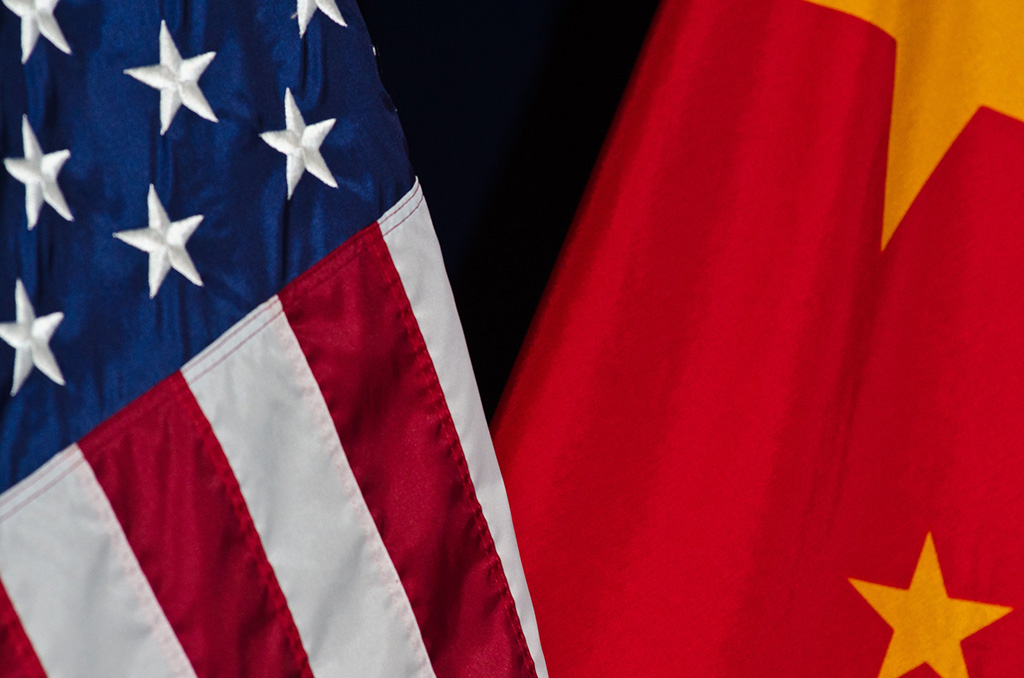
The names of things, of concepts, are important and by no means neutral, reflecting instead differences of analysis and various policy options. The US is engaged in redesigning its policy towards China –although it is still not clear what the Trump Administration is after– and Beijing is responding. What should it be called? This is debatable, and the most appropriate term has probably not yet been coined, given that we are in the presence of what Jonathan Ward calls a ‘unique and original competition’; a contest, one might add, not between states classically conceived but between state-civilisations, and that will feature factors involving competition and confrontation alongside others involving interdependence, an interdependent rivalry. Back in 2017 Graham Allison wrote about the danger of falling into what he termed ‘the Thucydides trap’, in reference to the ultimately military contest between Athens and Sparta. According to this view, ‘regardless of intentions, when a rising power threatens to displace a ruling power, the resulting structural stress makes a violent clash the rule, not the exception’. We are not there – yet.
Competition between great powers
China sees itself not as emerging but rather as re-emerging from the obscurity it entered mid-way through the 19th century after being at the forefront of the world’s economy (and to some extent its technology) for centuries. For China, this reverse was attributable to missing out on the industrial revolutions, and this time it wants to put itself in the vanguard of the Fourth. The target date it has set for the ‘China Dream’, for its economic and technological overtaking, is 2049, which marks the centenary of the communist revolution. The US –above all, but not exclusively, the Trump Administration– sees it as a rivalry, with China as a competitor to its power. The 2018 National Defence Strategy states that ‘inter-state strategic competition, not terrorism, is now the primary concern in US national security’. Not everyone believes that it is a case of a new great-power competition, however. Michael J. Mazarr, for instance, argues that the term does not capture the current reality, because in this contest, unlike traditional contests, the military factor is not central, at least for the time being, and with the exception of the South China Sea, although Beijing is significantly increasing its military expenditure and building a navy of immense scope and power. The US views China as a new factor in its nuclear reckoning. But the competition is overwhelmingly economic, technological and (with the Belt and Road initiative, for example) geopolitical.
A new Cold War
This expression is subject to misuse, with the tendency to overlook what the Cold War between the West and the Soviet Union actually involved, although it went through distinct phases: global military rivalry, characterised especially by an equilibrium in nuclear and conventional weapons, with proxy wars conducted through third parties, a contest of ideologies and economic systems (communism vs. capitalism) and a technological rivalry (there was a framework, known as CoCom –hard to replicate in the context of China– whereby Western powers agreed not to sell military or double-use technology to the Soviet side). In the case of China there is not, at least not yet, a comparable military balance, or an ideological competition, although the appeal of liberal democracy among third-party countries has waned compared to the authoritarianism of the Chinese model. Nor is there a policy of blocs. China is not trying to export its political model, which is unrepeatable, but scorns liberal democracy and favours authoritarian regimes. China does not recognise the values that played a role at certain junctures of the Cold War. Some Chinese observers, however, perceive ideological rivalry (the ‘malign influence’ of the US) in the uprisings in Hong Kong, for example. Some analysts, such as Thomas Wright of the Brookings Institute, think that the way this issue is resolved may determine whether the two countries can find a basis for managing competition with each other, or embroil them in a new and volatile Cold War. It ought to be added that the prevailing doctrine deployed against the Soviet Union was that of containment (in the sense of containing its military and ideological expansion, as advocated by George Kennan in his famous telegram of 1946), and (mutual) deterrence, two concepts that fail to apply, as things stand, to the Chinese context. The Economist has argued that we are facing a ‘new kind of cold war’. Xi Jinping himself has referred to a ‘new Long March’. The US has a great advantage: unlike China, it still has allies. Although the very concept of ‘the West’ has now been cast in doubt.
Decoupling
Interestingly, the term ‘decoupling’ is staging a comeback, and is gaining relevance in another context. In the Cold War it was applied especially to the distancing and divisions on the Western side, essentially between the European allies and the US, particularly at certain stages of détente. Now it is applied to the US and China to convey the fact that some economies –and much else besides– that had become closely intertwined, are capable of separating; in other words, strategic divorce or dissociation after a period of rapprochement. It is what has previously been referred to here as two ecosystems, something that could create problems for third parties, especially Europe, the rest of Asia, Africa and even Latin America, if Beijing and Washington force them to choose. Could this lead to a new non-aligned movement, this time essentially digital or technological in nature?
Here it is also possible to apply a concept borrowed from quantum theory, namely ‘disentanglement’, when two particles cease to synchronise with each other and dance in harmony. According to the theory, an observer changes reality by the very act of observing. And in relations between the US and China, a change in perceptions also means changing reality. The US public has become more hostile towards China. A survey conducted this year by the Pew Research Center found that 60% of Americans hold an ‘unfavourable’ view of China, as opposed to 48% last year. In China too, the image of the US has deteriorated significantly. The number of Chinese citizens who see the US superpower as a threat has grown, according to the Pew surveys (conducted in 2016). The idea of ‘Chimerica’, or of a G2, which at one point was being mooted, has fallen by the wayside.
A trade and technology war
The confrontation is taking the form of a trade war, which is ratcheting up and entails a battle for technological domination. Indeed, the EU too has already described China as a ‘strategic competitor’ and a ‘systemic rival’. Unlike the US, however, the Europeans have not taken reprisals against China (tariffs, blocking access to certain technological products) but, rather, precautionary measures. It remains to be seen what the impact will be and, if this kind of tension persists, to what extent the slowdown in the global economy, including in the US, will determine how the trade war unfolds. As early as his election campaign, Trump was already complaining about the jobs the US was losing to Chinese products, something that resonated with his voters. Chinese counter-measures –such as those aimed at soy imports and efforts at competitive devaluation– are to a large extent aimed against these voters in the critical months leading up to the election in November 2020. The US can do little to wield political influence on the Chinese system. Transforming the confrontation into a trade war geared towards the technological asphyxiation of China may be too late, as well as being counterproductive, consolidating China’s self-sufficiency in a relatively short time, as opposed to interdependence, and hindering its insertion into a shared international system.
One thing may turn into another. And, certainly, the situation that is being created has elements of everything mentioned above, and many new factors involving competition and interdependence. Whatever happens, China may slow down but not renounce to rising. The US and China will have to co-exist and interrelate, in a much more complex relationship than the one that pertained between the US superpower and the Soviet Union. For both, and for the rest of the world, there are challenges that have never been faced before. And, in fact, no-one as yet knows what name to bestow on this new situation in the making.


